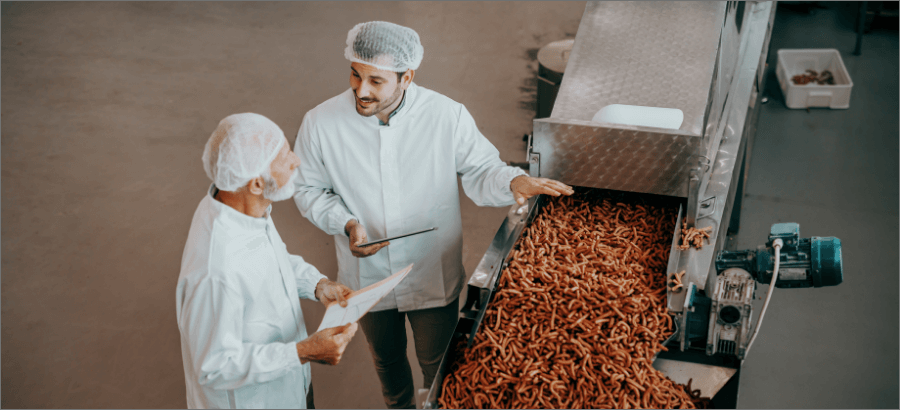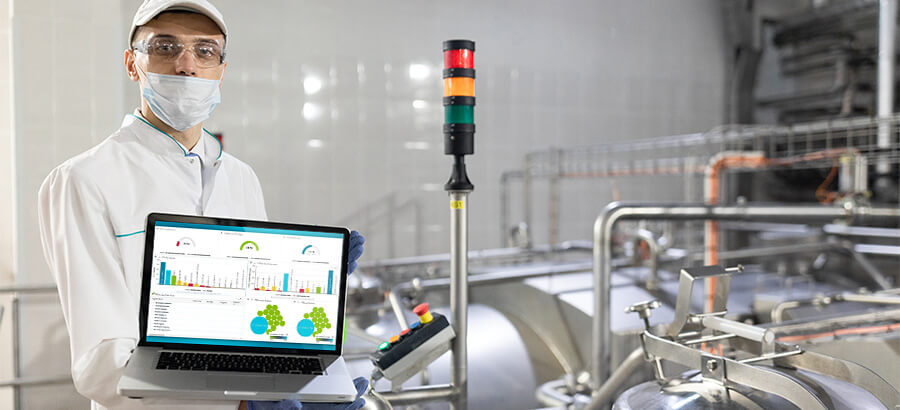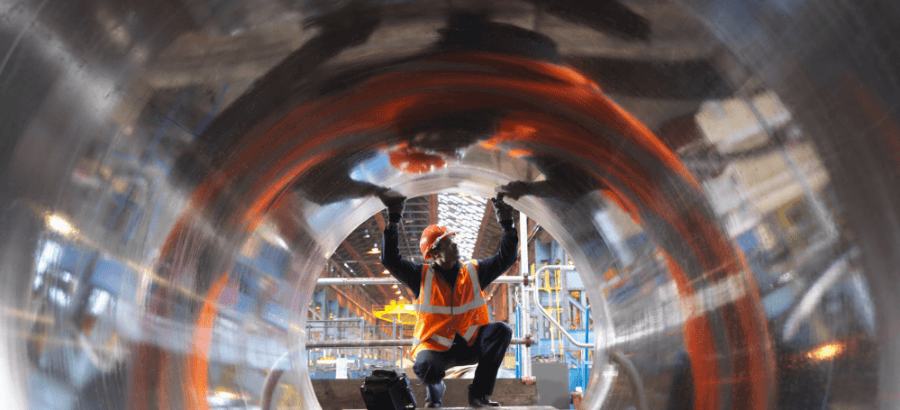Food and beverage manufacturing and distribution companies usually operate on smaller margins than most organizations in other industries. It’s therefore important for these companies to understand all the costs associated with developing, producing, marketing, selling, and delivering products so they can be priced appropriately. Unfortunately, a significant chunk of food and beverage companies’ raw materials are commodities, whose prices don’t just fluctuate from month to month but can change hour-by-hour. Manufacturers can’t just change the prices of their products to reflect these changes in raw materials — customers expect stable pricing, at least for a while — so typically manufacturers must absorb any raw material price increases. Wages are another significant cost for food and beverage manufacturers and distributors, and they’re going up, with labor currently very difficult to find and retain. To cope, many organizations are working to automate tasks, especially those repetitive tasks where people are likely to introduce errors.
Food and beverage manufacturers and distributors can have more control over costs, but only if they are monitored and fully understood — but without the right processes and technologies in place, that’s a very tall order.
Food and beverage product costs
Let’s go over some of the largest food and beverage manufacturing and distribution costs that are often overlooked:
- Material costs: These costs would appear to be the easiest to capture, but they are often incorrect because they don’t get updated or associated with specific production batches.
- Production costing: If your method for determining this is a guess informed by experience and gut feeling, don’t feel bad. Most plants don’t have much, if any visibility into time and materials consumed for typical plant operations.
- Discounting: The goal of this well-known sales tactic is to take a short-term loss to establish a new relationship with a customer for a long-term gain. But it’s often not accounted for, which can lead people to think that because sales are increasing, so are profits, which may not be the case.
- Marketing: This cost is important to building the sales funnel, but the costs of marketing activities — advertising, media, content creation, list rentals, and much, much more — are rarely accounted for in the cost of a product. It’s important to set measurable metrics to determine the success of these campaigns. After all, if they’re not making money, why run them?
- Trade promotions: Like discounting, trade promotions are to lose a little now to gain a lot later. But according to a study from Neilson, fully two-thirds of trade promotions don’t break even! In fact, getting rid of 22% of promotions would increase sales revenue. That’s not to say that trade promotions are a poor tactic – they’re not – but they do need to be measured and understood to ensure that they are effective at attaining their goal.
- Transportation: This is another enormous cost, and many manufacturers have tried to reduce it by utilizing third-party logistics companies. While this reduces capital expenditures, it can be difficult to track and allocate these costs accurately if the service provider doesn’t provide ample detail in billing.
- Inventory: It’s still common to manage inventory using paper forms, which introduces errors and delay in understanding the true state of the warehouse. And in many organizations, the location of items within the warehouse is dependent on tribal knowledge, which can be lost if key employees leave, get sick, or go on vacation. Additionally, many pickers simply take what’s easiest at hand, which means that stock at the back may go unseen for months and expire.
Certainly, this is nowhere near an exhaustive list, but it gives a view into how complex the situation is when it comes to accounting for all the true costs of a product. Pricing products to protect margins means you need to account for all of it…or, at least, as many of the largest costs as possible.
Solutions for reducing manufacturing and distribution costs
Thankfully, there are concrete steps food and beverage manufacturers and distributors can take to get their arms around costs and reduce them:
- Go after the big stuff first: You don’t have to go after everything. You want to understand as much about your costs as possible, but especially if you’re early in the process, don’t try to boil the ocean. The 80-20 rule is a good one to follow: start with the 20% of activities that account for 80% of costs. Typically, these high-impact areas are:
- Procurement
- Production
- Inventory
- Promotions
- Freight
- Invest in upstream planning: The more high-quality upstream planning you do, the more efficient you’ll be downstream.
- Standardize your business processes: If everyone follows the same process, it’s much easier to see when things are going awry, and costs are starting to balloon. When different groups do things a little differently than one another, costs become much tougher to capture accurately.
- Invest in transformative technologies: It’s nearly impossible to track costs in an accurate and timely manner when processes are a morass of paper forms, manual data entry, and scattered spreadsheets. Start with an ERP system which will assist you in centralizing all data in one single-view so that you can track costs and use additional technologies to improve processes.
- Automation: Again, don’t try to boil the ocean. Start small with relatively simple projects that will nonetheless have a big impact, such as installing sensors to count items accurately, which are enabled by an ERP system. Celebrate and promote the success of these efforts to expand automation to other areas.
Capturing the true cost of your products is not an overnight affair. Instead, it’s a journey where you’ll see improvement over time. But the time to start that journey is now. The disruptions in the supply chain, rising inflation, and rapid changes in market preferences that we’re seeing now aren’t likely to go away anytime soon. And if you’re going to protect your margins from being eaten alive by hidden costs, there’s no time better to begin than the present.








2 thoughts on “How food and beverage manufacturers can reduce costs and improve profits”
Thanks for sharing this useful information. Also I wanted to share a useful tip for food industry i.e.
“Flavors are key drivers for the growth of the food industry market.”
if anyone is interested in growing their food business and wanted in depth market research about it then check this site:- “https://www.rncos.com/index.htm” .